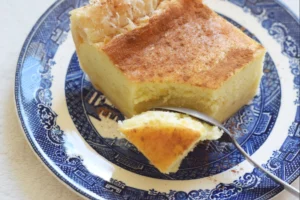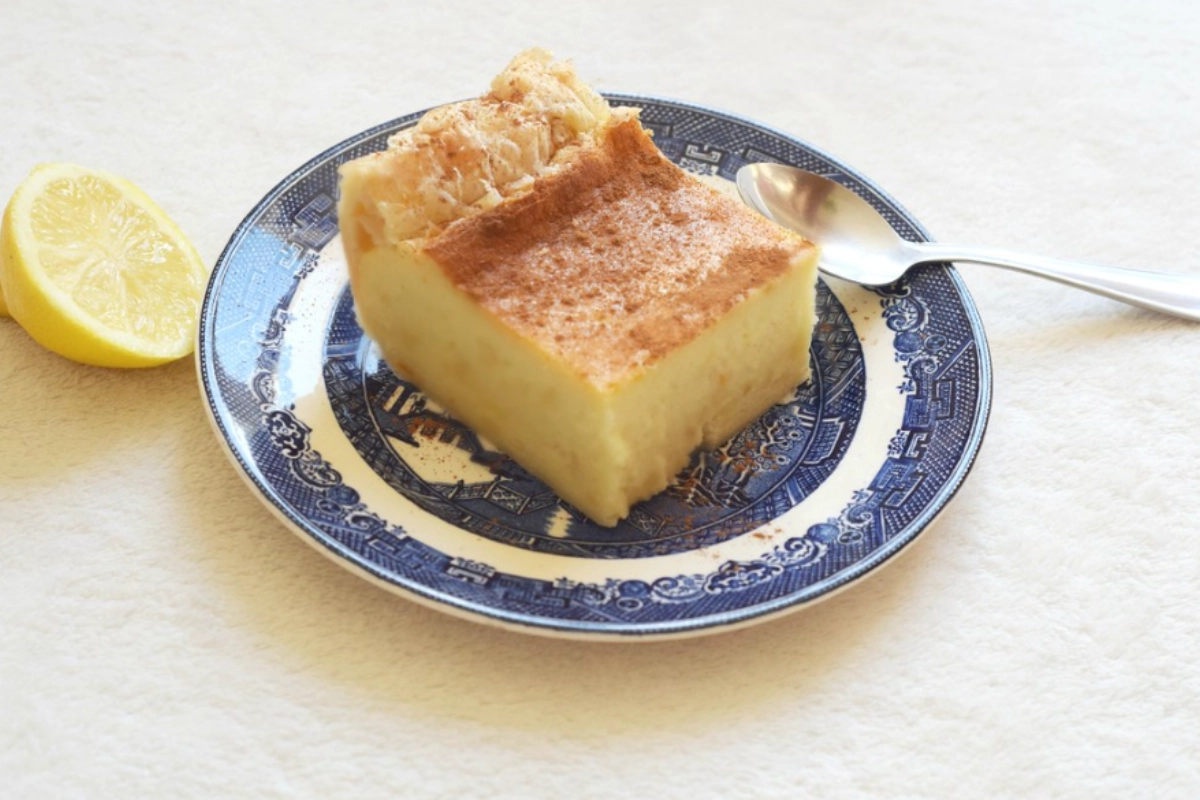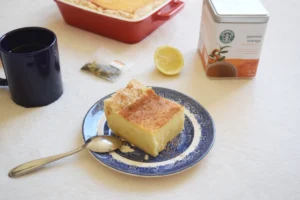Introduction to Custard Pie Recipes
Custard Pie Recipes, a beloved dessert passed down through generations, stands as a testament to culinary tradition and homely indulgence. In this section, we’ll take a closer look at the rich history and enduring charm of this classic treat.
The Basics of Old Custard Pie Recipes
Before diving into the intricate details of Custard Pie Recipes perfection, it’s essential to understand the foundational elements that make this dessert a classic favorite. In this section, we’ll explore the fundamental ingredients and preparation techniques that form the cornerstone of any custard pie recipe.
Ingredients and Preparation
Crafting a delicious custard pie begins with assembling the right ingredients and mastering the art of preparation. The key components typically include eggs, milk, sugar, vanilla extract, and nutmeg for that signature hint of spice. These simple yet essential ingredients come together to create a velvety custard filling encased in a flaky pie crust.
To prepare the custard filling, start by whisking together eggs and sugar until smooth and frothy. Gradually add warm milk infused with vanilla extract, stirring gently to ensure a homogeneous mixture. A sprinkle of nutmeg adds depth of flavor and a touch of warmth to the custard.
With the ingredients gathered and the preparations underway, you’re ready to embark on the journey to custard pie perfection. Stay tuned as we delve deeper into traditional recipes and creative variations to tantalize your taste buds.
Traditional Recipes for Old Custard Pie Recipes

Classic Custard Pie Recipe
For those seeking a taste of nostalgia and tradition, the classic custard pie recipe is a timeless choice. This beloved recipe captures the essence of old-fashioned baking, with its rich custard filling and buttery pie crust. Here’s a step-by-step guide to creating your own slice of custard pie perfection:
- Prepare the Pie Crust: Whether you opt for a store-bought crust or decide to make your own from scratch, ensure that it’s rolled out and fitted into a pie dish.
- Whisk the Eggs and Sugar: In a mixing bowl, whisk together eggs and sugar until light and frothy. This step is crucial for achieving the creamy texture that custard pie is known for.
- Heat the Milk: In a saucepan, gently heat milk until warm. Be careful not to boil it, as overheating can result in curdling.
- Combine Ingredients: Gradually pour the warm milk into the egg mixture, whisking continuously to prevent lumps from forming. Add a splash of vanilla extract for flavor and a sprinkle of nutmeg for that classic touch.
- Pour into Pie Crust: Carefully pour the custard mixture into the prepared pie crust, ensuring it’s evenly distributed.
- Bake to Perfection: Place the pie in a preheated oven and bake at a moderate temperature until the custard is set and the crust is golden brown. This typically takes around 40-50 minutes.
- Cool and Serve: Allow the custard pie to cool before slicing and serving. For an extra indulgent touch, serve with a dollop of whipped cream or a sprinkle of cinnamon.
-
Tips and Tricks for Perfecting Your Custard Pie Recipes
Achieving Custard Pie Recipes perfection requires more than just following a recipe. In this section, we’ll share some invaluable tips and tricks to help you elevate your custard pie game and avoid common pitfalls along the way.
Achieving the Perfect Texture
The hallmark of a great custard pie lies in its velvety smooth texture, where each forkful melts in your mouth with creamy goodness. Here are some tips to ensure your custard achieves that perfect consistency:
- Temperatures Matter: When combining the egg and milk mixture, ensure that the milk is warm but not boiling hot. This helps prevent the eggs from curdling and results in a silky smooth custard.
- Don’t Overmix: Once you’ve combined the ingredients, avoid overmixing the custard mixture. Gentle stirring helps prevent air bubbles from forming, resulting in a smoother texture.
- Use the Right Pan: Opt for a pie dish with a thin, light-colored bottom. Dark-colored pans absorb more heat and can cause the custard to overcook or develop a rubbery texture.
- Check for Doneness: To determine if your custard pie is ready, gently jiggle the pan. The custard should be set around the edges but still slightly wobbly in the center. Avoid overbaking, as this can result in a dry, tough custard.
Preventing Common Mistakes
Even the most seasoned bakers can encounter challenges when making custard pie recipes. Here are some common mistakes to avoid:
- Overbaking: Keep a close eye on your custard pie as it bakes, and remove it from the oven as soon as it’s set. Overbaking can cause the custard to curdle or develop a rubbery texture.
- Skipping the Blind Bake: For homemade pie crusts, blind baking (pre-baking the crust before adding the filling) helps prevent sogginess and ensures a crisp, flaky crust.
- Rushing the Cooling Process: Allow your custard pie to cool completely before slicing and serving. Rushing this step can cause the custard to collapse or become too runny.
- Not Using a Water Bath: Placing the pie dish in a water bath (a larger pan filled with hot water) helps ensure gentle, even baking and prevents the custard from overheating or cracking.
-
Serving and Presentation
Once you’ve mastered the art of making custard pie, it’s time to focus on presentation and serving suggestions. In this section, we’ll explore creative ways to garnish and present your custard pie to delight both the eyes and the taste buds.
Garnishes and Accompaniments
Enhance the visual appeal and flavor profile of your custard pie with thoughtfully chosen garnishes and accompaniments. Here are some ideas to spark your creativity:
- Whipped Cream: A classic pairing for custard pie, whipped cream adds a light and airy contrast to the creamy filling. Dollop a generous serving on each slice just before serving.
- Fresh Fruit: Top your custard pie with a medley of fresh fruit such as berries, sliced peaches, or citrus segments. Not only does this add a burst of color, but it also provides a refreshing contrast to the rich custard.
- Caramel Sauce: Drizzle warm caramel sauce over each slice for a decadent finishing touch. The sweet, buttery flavor of caramel complements the creamy custard beautifully.
- Toasted Nuts: Sprinkle chopped toasted nuts, such as almonds or pecans, over the top of your custard pie for added texture and flavor.
Presentation Ideas
Elevate your custard pie presentation with these creative ideas:
- Individual Servings: Instead of serving a whole pie, consider portioning the custard into individual ramekins for an elegant touch. Top each serving with a decorative garnish for added flair.
- Layered Parfaits: For a playful twist on tradition, layer custard pie filling with crumbled pie crust and whipped cream in parfait glasses. Top with a sprinkle of nutmeg or cinnamon for visual appeal.
- Pie Bars: Set up a DIY custard pie bar at your next gathering, allowing guests to customize their slices with an array of toppings and sauces. This interactive setup adds a fun and festive element to any event.
-
Health Benefits of Custard Pie Recipes
While custard pie is undoubtedly a decadent treat, it’s also worth exploring its nutritional content and potential health benefits. In this section, we’ll delve into the nutritional profile of custard pie and discuss strategies for enjoying it in moderation as part of a balanced diet.
Nutritional Content
Custard pie offers a combination of ingredients that contribute to its nutritional profile. Here’s a breakdown of the key components:
- Eggs: A rich source of protein, vitamins, and minerals, eggs provide essential nutrients such as vitamin D, vitamin B12, and selenium.
- Milk: Rich in calcium, phosphorus, and vitamin D, milk contributes to bone health and provides essential nutrients for overall well-being.
- Sugar: Sugar sweetens custard pie, but moderate consumption is vital to avoid excess calories and health issues.
- Pie Crust: Depending on the recipe, pie crust may add carbs and fats to custard pie’s nutritional content.
Moderation and Balance
Enjoying custard pie as part of a balanced diet is key to reaping its potential health benefits while minimizing its drawbacks. Here are some strategies for indulging in custard pie in moderation:
- Portion Control: Enjoy custard pie in moderation, savoring a small slice rather than indulging in oversized portions.
- Balance with Nutrient-Rich Foods: Pair custard pie with nutrient-rich foods such as fresh fruit or a side salad to balance out its indulgent nature.
- Choose Quality Ingredients: for high-quality ingredients, such as organic eggs and milk, to enhance the nutritional value of your custard pie.
- Homemade vs. Store-Bought: When possible, opt for homemade custard pie made with wholesome ingredients rather than store-bought varieties that may contain added preservatives and artificial ingredients.
FAQs about Old Custard Pie Recipes
- Another name for a Custard Pie Recipes: Another name for a custard pie is “egg custard tart.”
- Origin of custard pie: Custard pie has its origins in medieval Europe, with custard-based dishes dating back to at least the Middle Ages. The precise origin of custard pie as we know it today is unclear, but it gained popularity in British and American cuisine during the 17th and 18th centuries.
- Difference between chess pie and custard pie:While both chess pie and custard pie share similarities, there are distinct differences between the two:
- Filling: Custard pie typically features a smooth, creamy custard filling made from eggs, milk, sugar, and flavorings such as vanilla or nutmeg. In contrast, chess pie often contains a more dense, syrupy filling made from eggs, sugar, butter, and cornmeal or flour.
- Texture: Custard pie has a silky smooth texture, while chess pie tends to be denser and more gooey in consistency.
- Flavor: Custard pie has a delicate, creamy flavor with subtle notes of vanilla and spice, whereas chess pie tends to be sweeter and richer in flavor, often featuring ingredients like vinegar or corn syrup.
- What makes a custard pie weep: Custard pie may “weep” or develop moisture on its surface due to several factors:
- Overbaking: Baking custard pie for too long or at too high a temperature can cause the custard to overcook, resulting in excess moisture release.
- Rapid Temperature Changes: Sudden changes in temperature, such as transferring a hot pie directly to the refrigerator, can cause condensation to form on the surface of the custard.
- Undercooked Crust: If the pie crust is undercooked or not properly sealed, moisture from the crust can seep into the custard filling, causing it to become watery.
- Storage Conditions: Improper storage, such as leaving custard pie uncovered in the refrigerator, can also contribute to moisture buildup on the surface.
FOR MORE RECIPES CLICK HER


